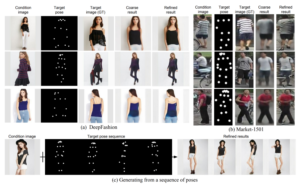Every company, no matter the size or industry, must have a sense of urgency in finding ways to bring AI into their organization.
While some companies – most large banks, Ford and GM, Pfizer, and virtually all tech firms – are aggressively adopting artificial intelligence, many are not. Instead they are waiting for the technology to mature and for expertise in AI to become more widely available. They are planning to be “fast followers” – a strategy that has worked with most information technologies. We think this is a bad idea. – Mahidhar & Davenport, HBR
It’s safe to say there isn’t a single org out there that is doubting the prevalence and propensity of artificial intelligence to disrupt their industry. There’s really no objection.
However, the idea that you can wait for the easy tool or enterprise integration of AI is very risky. Because there won’t be simple, umbrella solutions of a sales AI, marketing AI, human resources AI, etc… That’s just not how AI will progress.
In most cases AI supports individual tasks and not entire business processes – Mahidhar & Davenport, HBR
In 2018, it’s very important that you think of automation as if you were a sniper in the military – with one target (task) in mind. Do not think about how AI can improve your entire marketing department. Think, instead, how AI could be used to generate content ideas, which is one task among the entire marketing strategy.
It’s this focused, task-level thinking that has inspired more than 2,700 AI projects at Alphabet.
Look for tasks within your organization that are repeatable and gather lots of feedback/data. These are the low hanging fruit.
Before you begin that process, though, it’s important to learn the capabilities of AI to inform where it can be applied on a task-level. I think there’s no better place to start than GANs.
Fans of GANs
Generative Adversarial Networks (GANs) are a class of artificial intelligence that operates by pitting two neural networks against one another (hence, adversarial).
One neural network, called the generator, generates new data instances, while the other, the discriminator, evaluates them for authenticity; i.e. the discriminator decides whether each instance of data it reviews belongs to the actual training dataset or not.
You can think of a GAN as the combination of a counterfeiter and a cop in a game of cat and mouse, where the counterfeiter is learning to pass false notes, and the cop is learning to detect them. Both are dynamic; i.e. the cop is in training, too (maybe the central bank is flagging bills that slipped through), and each side comes to learn the other’s methods in a constant escalation. – Skymind AI
It’s a system that is optimal for producing, evaluating, and reworking a creation, which is why it has been referred to as the creative-side of artificial intelligence.
Most notably, Robbie Barrat created a GAN for the purposes of artistic creation. His code was used by a team called Obvious, which trained the GAN on 18th-century portraits and eventually sold one of their digital creations at a Christie’s auction for $435,000.
GANs’ potential is huge, because they can learn to mimic any distribution of data. That is, GANs can be taught to create worlds eerily similar to our own in any domain: images, music, speech, prose. They are robot artists in a sense, and their output is impressive – poignant even. – Skymind AI
Today, GANs are being tested in various creative endeavors. This Redditor is experimenting with GANs to push sneaker designing to new areas we’ve never thought to explore. Robbie Barrat, the same man behind the aforementioned artistic GAN, has since moved on to high fashion – using GANs to create entirely new clothing color palettes and augment the role of creative director at a fashion house.
I’m very intrigued by the application of GANs to the arts, however, the marketer in me is more interested in using GANs to assist us in marketing tasks.
GANs in Marketing
Recently, two researchers at Stanford ran a GAN experiment on automating the creation of Airbnb listing descriptions. Any marketer worth their weight in gold knows that the way you describe a product is equally, if not more, important than the product itself. The theory was that the way in which a listing was phrased would directly correlate to its occupancy rate. Armed with data from 40,000 Airbnb listings they taught a GAN to optimize descriptions.
In the end, they came to the realization that aside from keyword packing, the listing descriptions didn’t affect the occupancy rate quite as much as other characteristics: location, amenities, and home type. What’s important is that they had a theory, acquired needed data, and ran a test. I’d expect that more experiments with better data will follow suit and push this theory forward – ultimately with the goal of optimizing descriptions for products, services, and other digital products.
Taking things in a different direction, the Pose Guided Person Generation Network is a GAN research project aimed at manipulating a subject within an image into different poses. The value in this would be that product photographers (hopefully by 2038) could focus on taking one great picture and allow the GAN to recreate all the other product angles. This would translate to monumental time and cost savings for an e-commerce business – given that the average cost of shooting one product is upwards of $30. You can see the early progress of this below:

While both of these GAN research projects have obvious benefits to any e-commerce business. I feel that the outlook is even greater. The true value is in teaching a GAN that produce any sort of convincing text or image, just by giving it a set of parameters.
One of the practitioners at the forefront this is Janelle Shane of the blog AI Weirdness. Her text generating GANs have produced quirky things such as Dungeons & Dragons character bios and ear-grabbing CNN headlines. If you have a free minute or two, I’d highly suggest you get lost on her website for a little while. You’re going to learn a lot about neural networks (such as GANs), in a very entertaining, peculiar way.
I realize that the GAN projects I’ve outlined above are not nearly as convincing as putting in the human elbow grease and doing it yourself. However, this is an area of AI that once it clicks, the output will outpace the work of hundreds, even thousands of workers. Not to mention, we’re looking at GAN just a few years in. After all, the theory behind GAN is just four years old.
What to Takeaway?
Right now, you should optimize for learning the current experiments happening with AI and posing questions of AI’s capabilities. Ruminate on the different ways AI may fit within your org, talk to knowledgeable people about what these tests may require, and think about what type of data you should be collecting.
Proprietary data will be the differentiating factor between companies that successfully implement AI and those that fall behind.
What data are you collecting today that is unique to your organization? If the answer is “none”, how might you start collecting proprietary data sets?
